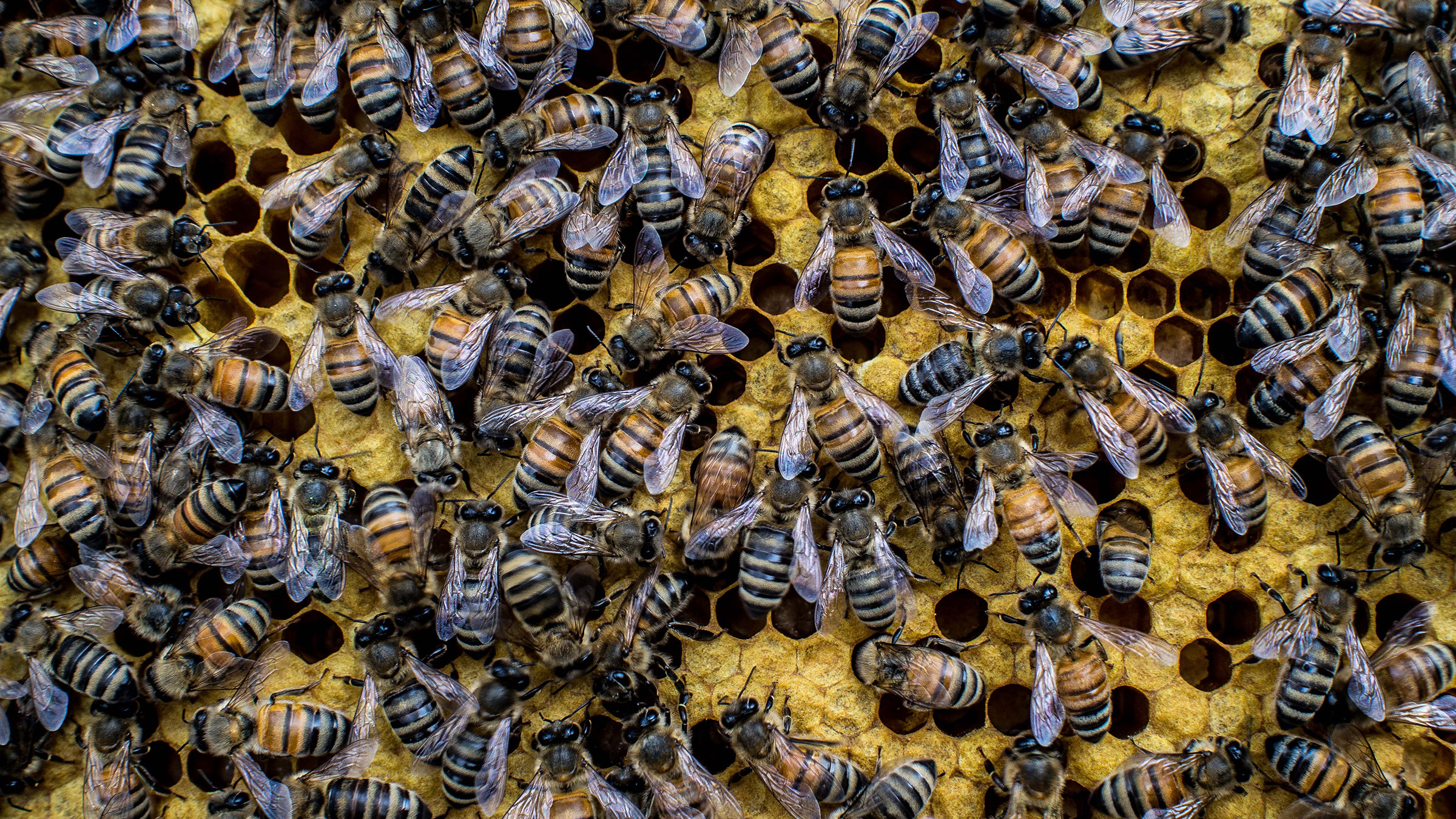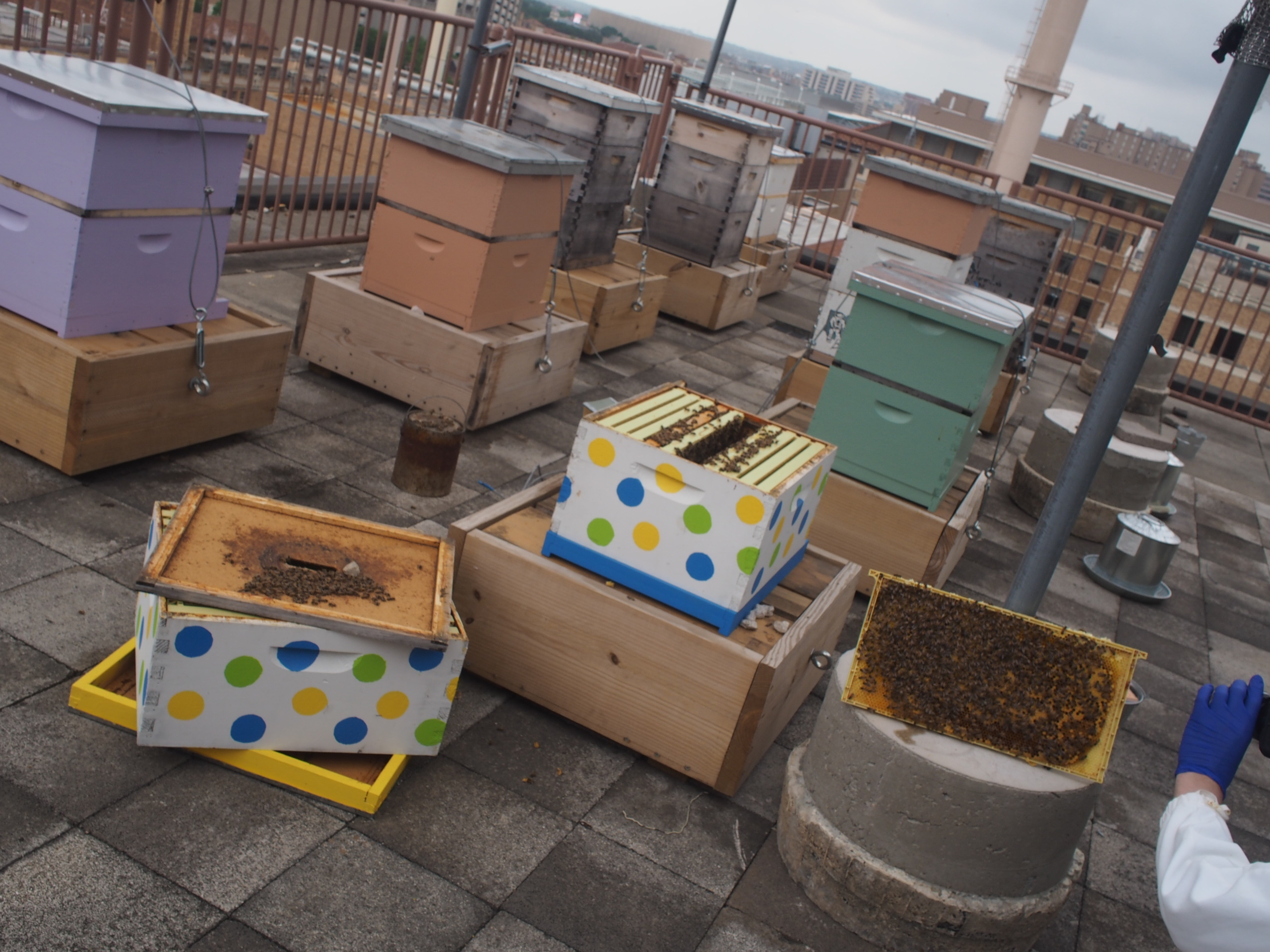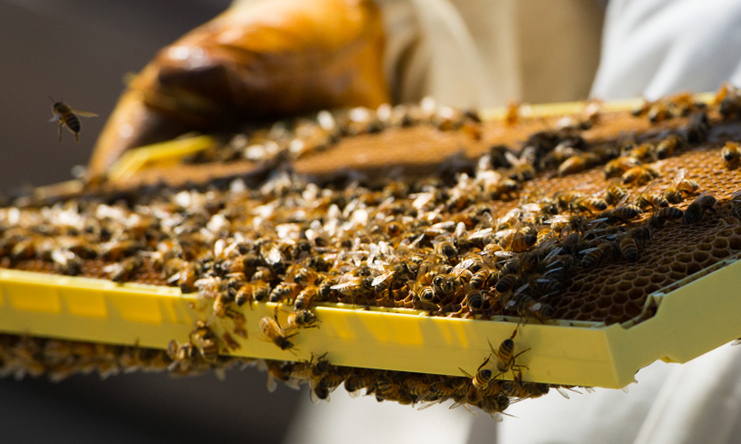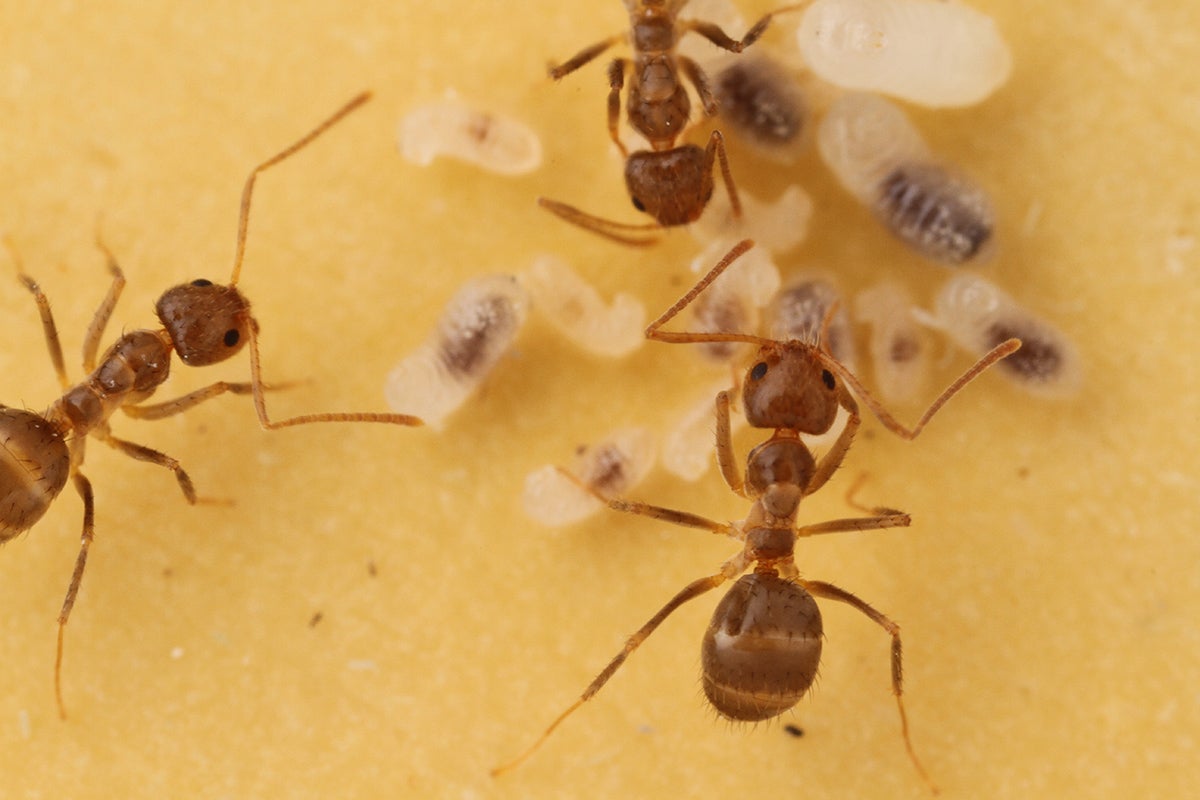Saving the Bees, Two Perspectives
How do you move 100,000 honeybees—a living laboratory for research on the gut microbiome—half way across the country?

Credit: Marsha Miller
As bees sharply decline around the world, two researchers are taking very different approaches to understand -- and potentially reverse -- this troubling trend. One is studying the microbes that live inside bees and help protect them against infections. The other is studying the links between changing landscapes and bee health. Learn more about the two professors of integrative biology featured in today's show: Shalene Jha and Nancy Moran.
TRANSCRIPT
Marc Airhart: This is Point of Discovery. I'm Marc Airhart. When Nancy Moran decided to move her lab halfway across the country -- from Yale University in Connecticut to The University of Texas at Austin – she had just one small problem. She had to figure out how to move her research subjects -- 100,000 bees.
Nancy Moran: We read up on how to do this. We rented a min-van. [laughs]
MA: You weren't going to use your own cars?
NM: No.
MA: They waited until nightfall when the bees were all back in their bee boxes -- and they duct taped all the openings closed. Wire screens on top of the boxes allowed them to let out excess heat. They loaded the bees up into the mini-van and a grad student and a postdoctoral researcher set off on the 3-day trip. Oh, and it was in August, so it was very HOT.
NM: Basically they turned up the AC all the way – the cooler you keep it the better, the calmer the bees stay – they wore jackets, turned up the AC – they had a cat in a cat carrier, on top of everything. And at night, they had to spend the night in a couple of places in a motel or something and they would just park the car and open all the windows so the heat could come out.
MA: Weren't they worried about leaving their precious cargo in an unlocked van?
NM: I don't think there's a problem with anyone stealing anything from a van full of bees.
MA: OK. But what about a "Snakes on a Plane" kind of scenario?
NM: Yeah, if you make a sudden stop, the whole thing comes open and a volcano of bees comes out. I said if that happens, just get out, close the door and run. But nothing like that happened, so that was good.

Credit: Marsha Miller
MA: The van and the bees made it safely to Austin and now the descendants of those bees are living up on a rooftop high above the hustle and bustle of a sprawling university campus. These research bees have it relatively good compared to many bees out in the real world. They're well cared for. But around the world, native bees are in sharp decline and even domesticated bee colonies have been experiencing mysterious collapses. More than half of the food we eat is made possible by pollinators like bees. Shalene Jha is another biologist studying bees at UT Austin.
Shalene Jha: It worries me because these organisms provide such an important service to us by facilitating this plant reproduction and we get to eat all these great foods because of them and all of these amazing plant communities thrive because they have these pollinators to help them mediate reproduction.
MA: Jha says one of the big culprits in the decline of bees is us. We are changing landscapes in ways that reduce the flowering plants they feed on and the sites they nest in. Just like humans who live in neighborhoods without access to healthy food options, bees are increasingly finding themselves in food deserts.
SJ: What happens, when we talk about pollinators, is we forget they are out there trying to eat a good meal and just like humans, nutrition and diversity in diet is important to them and having food throughout their lifespans is important – they can't just eat for a few periods and then go hungry.
MA: Jha says when bees have to work harder to feed themselves and their offspring, and have lower quality food, they are more susceptible to diseases, predators and exposure to pesticides. So how does she study bees?
SJ: So basically, we go out, we collect little bits of DNA from bees as they forage, and we can use it to figure out how closely related they are to one another. For social bees like bumblebees you can figure out where a colony is located and how it's foraging and with that info you can map it back to the landscape to a certain floral resource pattern.
MA: Jha has found evidence that native bees tend to forage farther from home at the end of summer, when fewer plants are blooming. That means they are spending more energy and are more vulnerable. To help them, farmers, land managers and homeowners should consider not only providing a diversity of flowering plants, but also plants that flower specifically during such stressful times.

Credit: Vivian Abagiu
MA: In addition to habitat loss, scientists trace at least part of the bee declines to diseases and exposure to pesticides. Last year, Nancy Moran -- the biology professor we met earlier -- was cited for her notable pollinator research in a White House Task Force report. She thinks one of the ways bees naturally withstand diseases and pesticides has to do with the healthy microbes that live inside their guts.
NM: And one thing we're interested in is how these beneficial bacteria might protect the bee against pathogens. By having established a healthy microbiota in the gut, does that protect them against invasion from pathogens? There's some good evidence that that's the case ... So understanding it might help beekeepers understand how to manage bees in a way that helps to promote that protection.
MA: To study what benefits a bee gets from having certain microbes in its gut – or from NOT having certain microbes – a quirk of bee biology comes in handy for Moran and the other researchers in her group, including first-year UT Austin students in the Freshman Research Initiative. She and her student researchers get to research bees with absolutely clean guts. You see, when bees transform from pupae to adults and they emerge from their little cells in the hive, they don't have any gut microbes. They have to get those from their colony mates.
NM: … we let them emerge in the lab, in a clean environment. When they emerge as an adult, their guts are completely clean. So we use those new adult bees with clean guts and then we can experimentally give them different bacteria that we have characterized. So we can control what's in the gut … we can measure, can the bee detoxify something or utilize something when it has this bacterium or when it doesn't have this bacterium? So that's the basic experiment.
MA: Eventually, Moran says her work might reveal the microbial differences between a bee colony that can fend off a certain virus and a colony that can't. And that might someday lead to a kind of "probiotics" for bees.
NM: If that's true, you could treat colonies with some of the better strains of bacteria … and improve their survival.

Podcast producer Marc Airhart (left) in full bee suit. Credit: Vivian Abagiu
MA: Meanwhile, Jha acknowledges that, because they sting, not everyone likes bees. But a world without bees would be much poorer.
SJ: I think size-wise they are these very small creatures that have an incredibly large impact on our plant communities and our diets. That's why I love them. [laughs]
MA: That's our show. By the way, you can see a video and some photos of UT's rooftop bees by going to our website at pointofdiscovery.org. While you're there, be sure to subscribe to us on iTunes or iTunes U. You can also listen on Stitcher. If you like what you hear, help us create a buzz – like it and share it on social media or leave a review on iTunes. Special thanks today to Kim Hammond, Eli Powell and Vivian Abagiu. Point of Discovery is a production of the University of Texas at Austin's College of Natural Sciences. I'm Marc Airhart. Thanks for listening.
Below, you can watch a video from the Hidden UT series, about the bees that live atop Patterson Hall:



